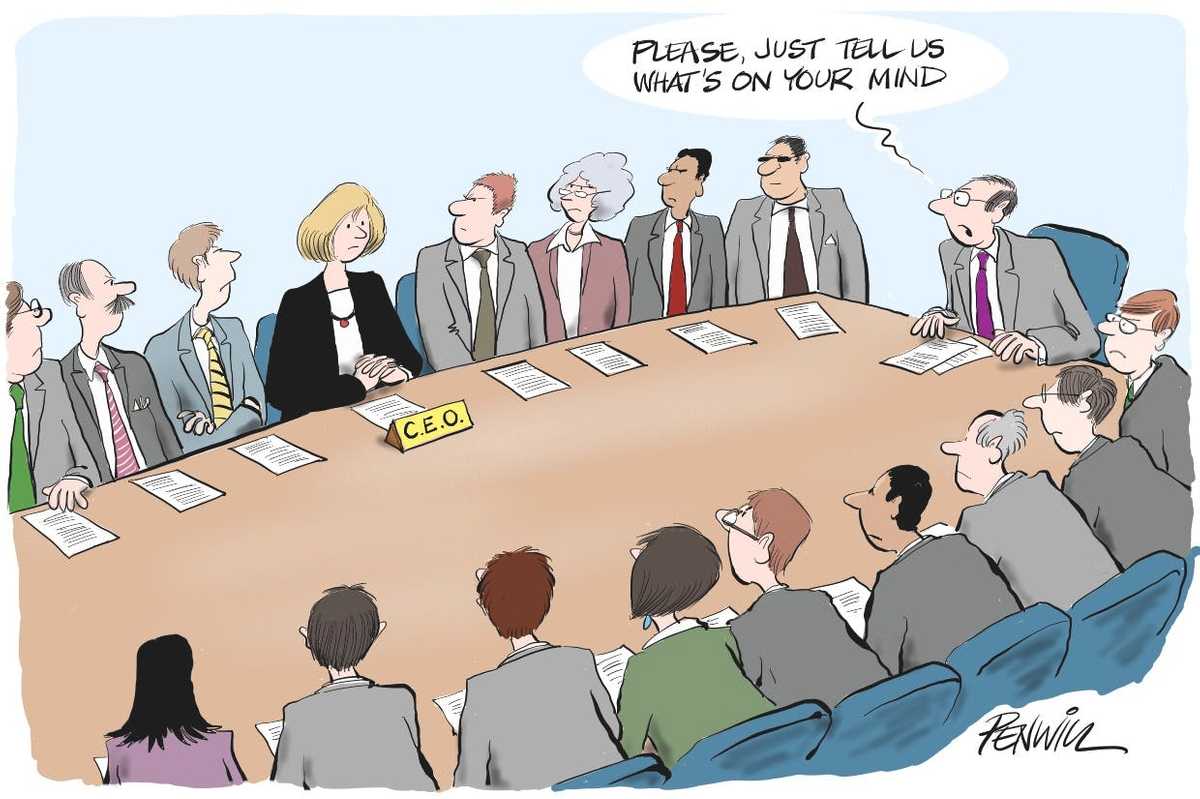The CEO Report: Crafting a Strategic Cornerstone for Board Meetings

Introduction
Boards of directors have a paramount responsibility: appointing the right CEO. The CEO is the leader, innovator, and motivator, setting the tone and values of the company. Given this critical role, the CEO's report should be a central component of board meetings. However, too often, it falls short of its potential. This blog explores best practices for creating a CEO report that ensures productive and strategic board meetings.
The CEO Report as a Strategic Agenda Foundation
A well-crafted CEO report should be the bedrock of a strategically focused board meeting agenda. By linking the report to strategic themes, it ensures that the meeting remains centered on long-term goals and priorities.
Best Practices:
- Strategic Alignment: Ensure the CEO report sets the stage for the meeting, reflecting strategic themes that guide subsequent discussions.
- Early Collaboration: Have the CEO and Chairman discuss the report early in its development to ensure it addresses key strategic questions.
Pitfalls to Avoid:
- Treating the CEO report as just another item on the agenda, leading to insufficient time for strategic discussions.
- Allowing the report to be solely about what the CEO thinks is important, without considering the perspectives and questions of the board members.
Integrating the CEO Report with the Agenda
The CEO report should not be a standalone item. Instead, it should seamlessly introduce and contextualize other agenda items, enhancing their relevance and strategic importance.
Best Practices:
- Contextualization: Connect the CEO report with the rest of the agenda by linking it to papers or proposals being discussed.
- KPI Overview: Support the report with an overview of key performance indicators (KPIs) and qualitative commentary on progress, uncertainties, and challenges.
Pitfalls to Avoid:
- Treating the CEO update as a separate agenda item rather than integrating it with the broader meeting agenda.
- Relying solely on financial performance reports without broader strategic insights.
Providing Insight into Priorities and Challenges
A robust CEO report should capture what is foremost in the minds of the CEO and the executive team, offering updates on priorities, uncertainties, constraints, and responses.
Best Practices:
- Executive Insights: Use the report to provide a clear picture of immediate challenges and the executive team's outlook on the future.
- Setting the Scene: Place the CEO report at the beginning of the agenda to set a strategic tone for the meeting.
Pitfalls to Avoid:
- Leaving the board with a vague understanding of immediate challenges or future outlooks.
- Scheduling the CEO report towards the end of the meeting, where it might get squeezed out due to time constraints.
Focusing on the Customer
Customer insights are critical to a company's success and should be a focal point of the CEO report. This includes celebrating successes and addressing disappointments, discussing new developments, and understanding competitor actions.
Best Practices:
- Customer Focus: Regularly update the board on customer-related developments, sales data from CRM and competitive dynamics.
- Stakeholder Considerations: Include updates on media coverage, regulatory developments, and political landscapes.
Pitfalls to Avoid:
- Allowing internal performance updates to overshadow customer and market insights.
- Neglecting external factors that can drive change and impact strategic plans.
Balancing Short-Term and Long-Term Perspectives
The CEO report should provide a balanced view of both immediate concerns and long-term strategic goals, ensuring the board is well-informed about current operations and future directions.
Best Practices:
- Future Outlook: Clearly outline short-term priorities and long-term strategic goals in the report.
- Organizational Change: Address internal pressures, organizational stress, and risk management.
Pitfalls to Avoid:
- Focusing solely on past performance without discussing future challenges and opportunities.
- Assuming the board will naturally connect disparate pieces of information without a cohesive narrative.
Ensuring the CEO's Voice
The CEO report should reflect the CEO's perspective and insights, even if it is drafted with the help of others. It should convey the CEO's vision, concerns, and strategic thinking.
Best Practices:
- CEO Authorship: Ensure the report is either written by the CEO or closely directed by them, especially the introductory sections.
- Pre-Read Distribution: Include the report in the pre-read materials to allow directors to prepare for strategic discussions.
Pitfalls to Avoid:
- Allowing the report to be ghostwritten without significant input from the CEO.
- Relying on a verbal update or a brief summary, which might lack depth and context.
Engaging the Executive Team
Before finalizing the CEO report, it is beneficial to share it with the executive committee. This ensures the report covers relevant points and provides a fair and comprehensive picture.
Best Practices:
- Executive Feedback: Seek input from the executive team to refine the report and ensure it addresses key issues.
- Selective Sharing: Share parts of the report that are appropriate for broader discussion while keeping sensitive insights private.
Pitfalls to Avoid:
- Preparing the report in isolation without feedback from other executives.
- Including unnecessary details that dilute the strategic focus of the report.
Maintaining Confidentiality
To foster an open and honest discussion, ensure only the necessary individuals are present during the CEO's presentation. This typically includes board directors, executive directors, and key officers like the Company Secretary and General Counsel.
Best Practices:
- Selective Attendance: Limit attendance to essential personnel to maintain confidentiality and encourage openness.
- Strategic Discussion: Create an environment where the CEO can candidly discuss challenges and strategies.
Pitfalls to Avoid:
- Inviting unnecessary participants, which might hinder open communication.
- Creating a restrictive atmosphere where the CEO feels unable to discuss critical issues freely.
Conclusion
A well-structured CEO report is essential for effective board meetings. It should be the cornerstone of a strategically focused agenda, providing comprehensive insights into the company's performance, challenges, and future directions. By following best practices and avoiding common pitfalls, CEOs can ensure their reports drive productive and strategic discussions, ultimately enhancing the company's governance and long-term success.


